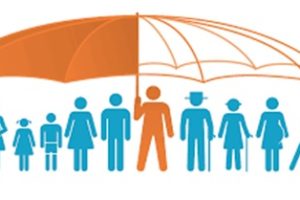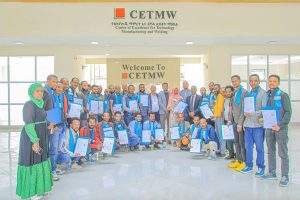
Ethiopia is home to over 80 distinct ethnic groups. As in any diverse country, these ethnic groups have developed their own unique languages, norms, and cultural and religious values that reflect their identity and entertain them in their day-to-day activities.
One of the many successful indigenous practices that are well-established and effectively exercised by the different ethnic groups is the dispute resolution mechanism.
These ethnic groups, in a manner contextualizing their norms, traditions, social, cultural, political, economic, and religious values, practice the mechanisms to deal with conflicts that may arise between and among themselves, thereby maintaining peace and stability by averting disputes.
Shemgilena, the Gadaa System, Siera (Bobenie), and Abala are among the customary conflict resolution mechanisms that are practiced among the peoples of Amhara, Oromo, Halaba, and Afar communities, respectively, to deal with disputes and settle conflicts.
These customary dispute resolution methods are more effective and acceptable for resolving disputes between individuals and groups because they are established based on the consensus and goodwill of society.
Most importantly, because the system incorporates community elders and religious leaders, among others, and the punishments enforced on individual disputants take into consideration the reality on the ground, they are more effective to settle disputes and sustain peace.
Owing to this, their role in effectively managing and addressing conflicts is irreplaceable. However, these days, the systems are eroded due to various factors, which call for more attention.
Following this, recently, a training that aimed to build the capacity of stakeholders drawn from different sections of the community on indigenous conflict resolution systems was organized by the Women and Children Sector of the Ministry of Women and Social Affairs.
The training was organized in collaboration with the UN Women under the topic “Traditional Conflict Resolution Mechanisms in Ethiopia.”
Speaking on the occasion, Women and Children Affairs State Minister Hikma Kayredin emphasized the need to use the wisdom of traditional conflict resolution mechanisms and pass it on to the generation to come.
The State Minister said that whenever a conflict arises, it affects all citizens. However, women, children, the elderly, and the disabled are more vulnerable. It also causes greater damage to the country.
”In our teachings, both cultural and religious, conflict is an unacceptable and unnecessary matter. Thus, everyone should play their part in the national efforts exerted to build lasting and sustainable peace,” she underscored.
According to her, even if the conflict is natural, unavoidable, and can occur for various reasons, it is necessary to resolve disputes peacefully by using the longstanding traditional conflict resolution methods to save the generations.
Mentioning the greater role that indigenous conflict resolution systems play in sustaining peace, she said: “however these days the system is being eroded from time to time due to emerging foreign cultures. We are losing our important traditional and cultural norms and values.”
Therefore, the efforts that started as a country to maintain and exploit the good values of indigenous wisdom should be further strengthened to sustain peace and build a peaceful country. “We are also expected to utilize these traditional conflict resolution skills effectively and pass them on to the next generation,” she remarked.
In this regard, the training will help to upgrade understanding with respect to indigenous conflict resolution mechanisms, enhancing the role of stakeholders to put the knowledge they have gained into practice. She also urged participants to apply the knowledge they have grasped at the training.
The training conducted for three consecutive days was attended by religious leaders, elders, Haadha Siinqee, women peace ambassadors, judges of the cultural courts, representatives of women and youth organizations, and representatives of women’s development unions drawn from Tigray, Oromia, Afar, Gambella, Benishangul, and Central Ethiopia states and deliberated on a range of topics, the Ministry of Women and Social Affairs reported.
BY STAFF REPORTER
The Ethiopian Herald November 3/2024





